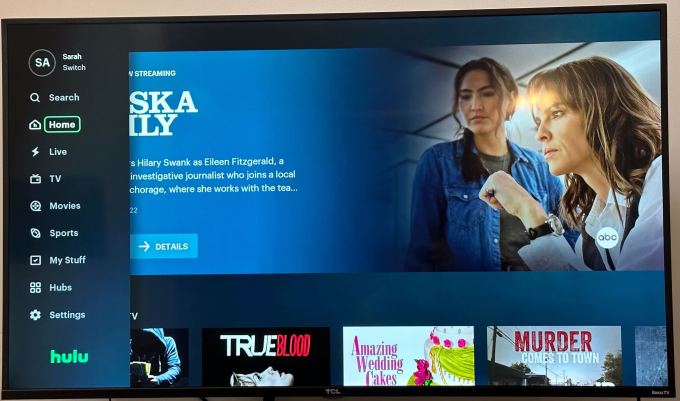Hulu is slowly rolling out a new interface on streaming devices like Fire TV, Apple TV and Roku, among other compatible devices. The new redesign moves the navigation to the left side with options for TV, Movies and My Stuff.
The company confirmed to TechCrunch that the updated interface began rolling yesterday. It will be available across all supported connected TV devices in the coming months, including Android TV devices as well as Chromecast, LG smart TVs, Samsung smart TVs, Vizio SmartCast TVs and more.
Cord Cutter News was the first to report the new interface.
Users that have seen the update were welcomed with a message from Hulu that writes, “Over the next few weeks, Hulu’s navigation menu will move to the left side of the screen on living room devices. Press ‘back’ to open the menu for easy access to TV, Movies, My Stuff, and more.”
The update makes it easier for TV users to navigate to these destinations. Previously, viewers had to scroll all the way up to the top of the page. Users can now click on the remote’s back button to access the menu.
The streaming company’s last major redesign push for the big screen was in 2020 when it introduced categories like “TV,” “Movies” and “Sports” through top navigation.
Last October, the streaming service raised its prices from $6.99 per month to $7.99 per month for the ad-supported plan and from $12.99 per month to $14.99 per month for the ad-free plan. Disney’s ad-supported bundled plan with ESPN+, Disney+ and Hulu also went from $13.99 per month to $14.99 per month.
In December, Hulu also hiked the Live TV bundle prices from $69.99 per month to $74.99 per month for the Basic plan, which offers Hulu Live TV and ESPN+ with ads and Disney+ with no ads. The premium plan got a raise from $75.99 per month to $82.99 per month, which offers Hulu + Live TV and Disney+ with no ads and ESPN+ with ads.
Hulu debuts a new interface with a vertical sidebar on Fire TV, Apple TV and Roku by Ivan Mehta originally published on TechCrunch
from TechCrunch https://ift.tt/ySgXaD8


Comments
Post a Comment